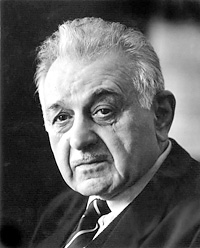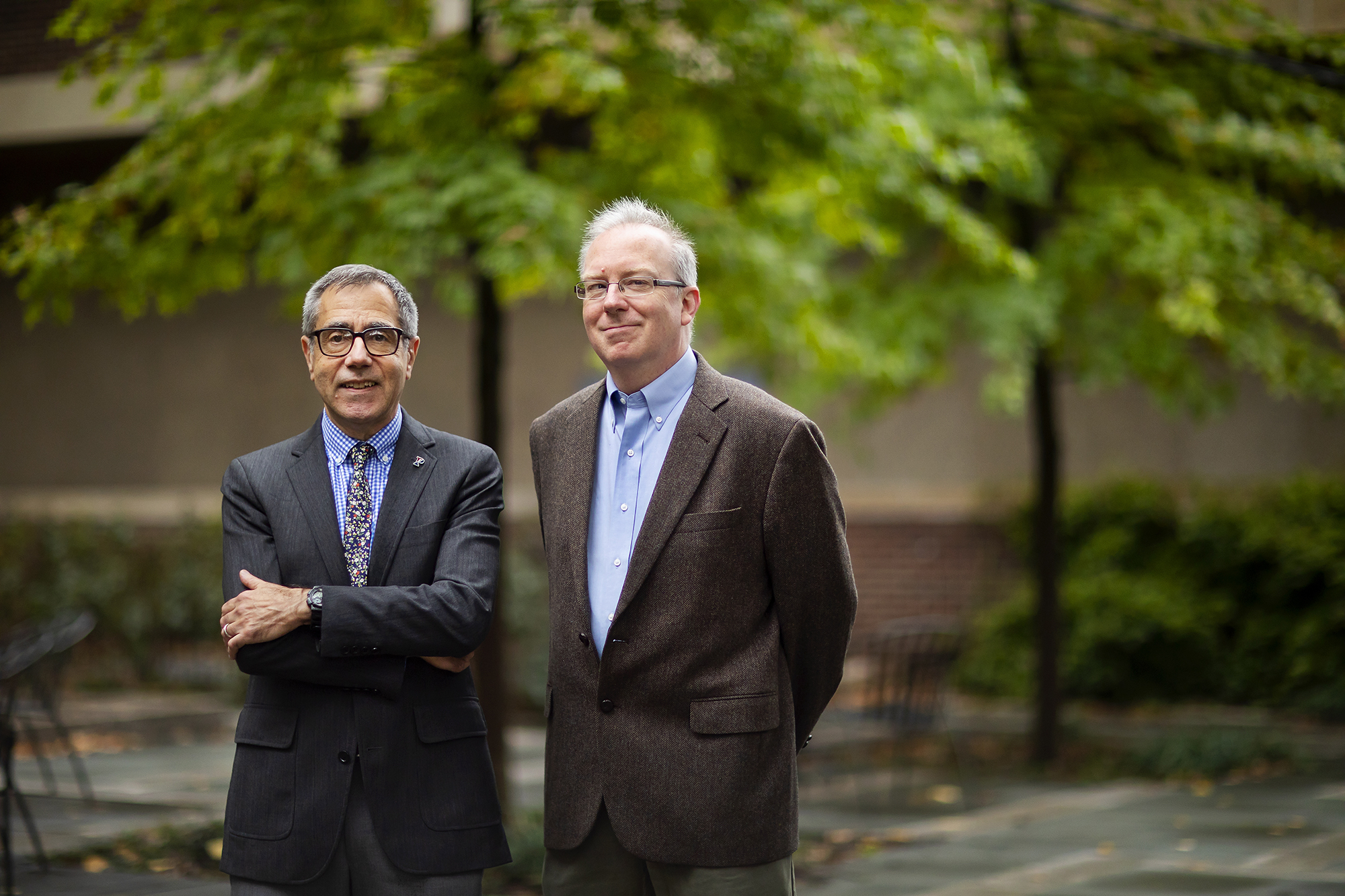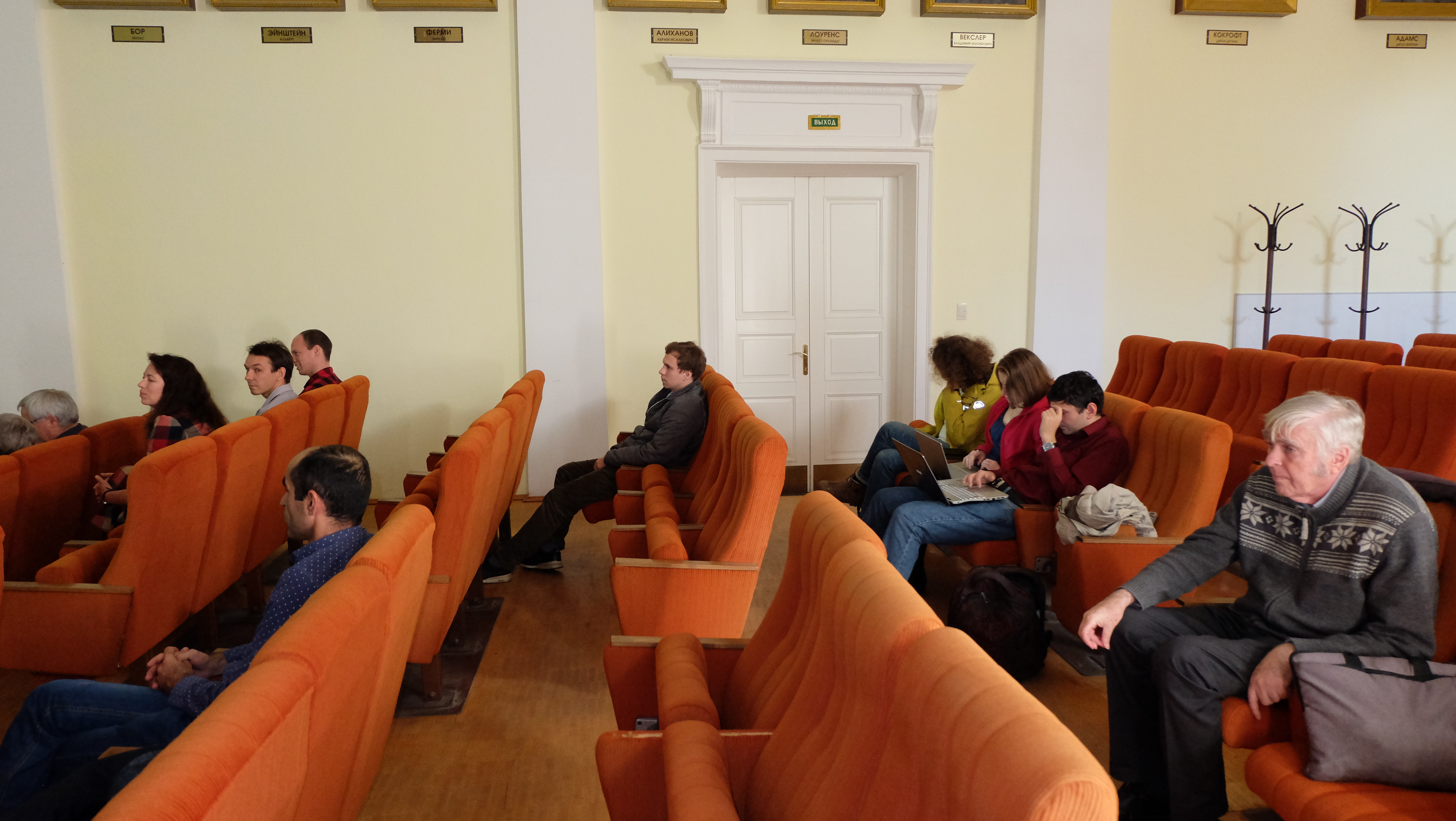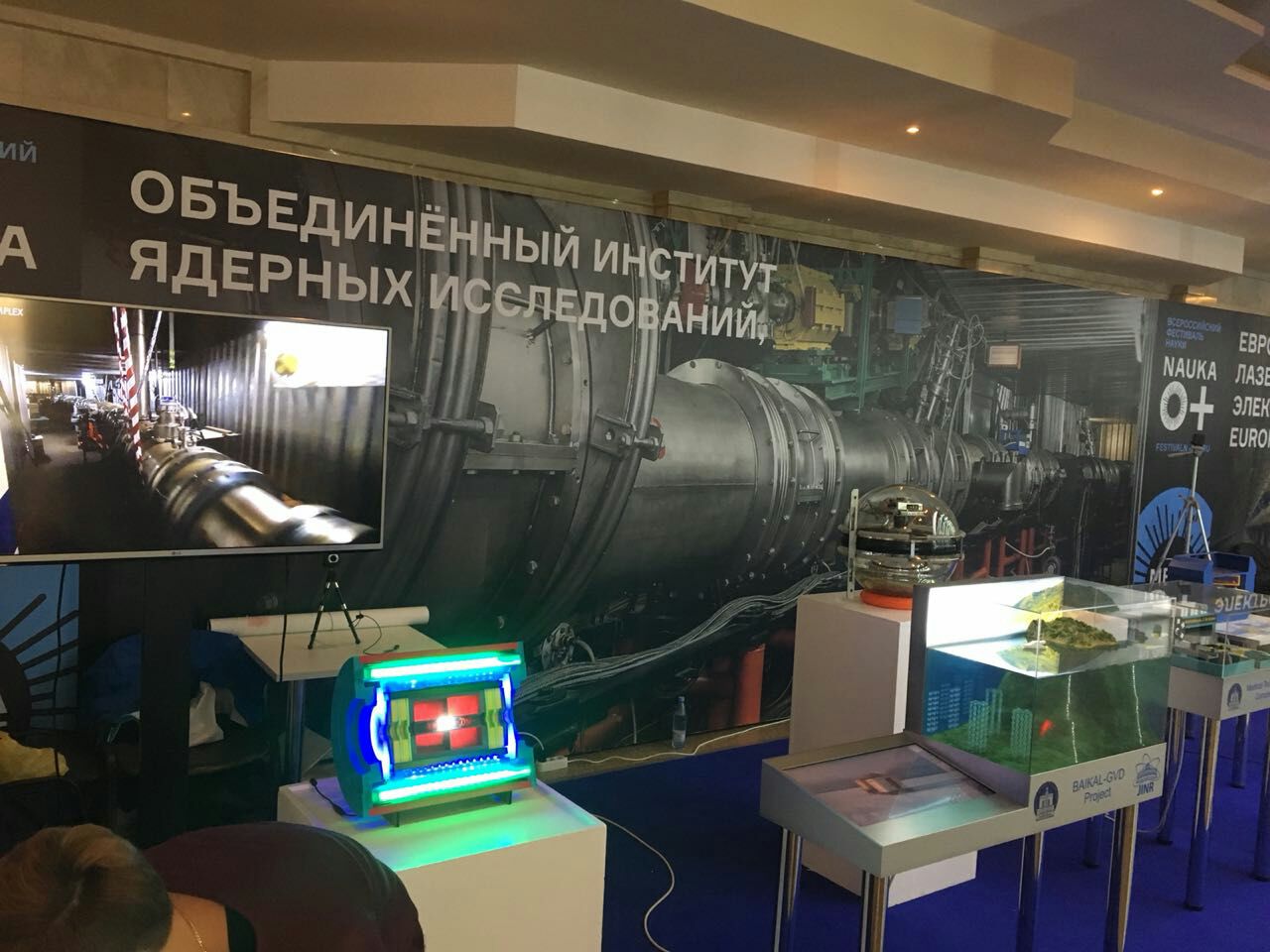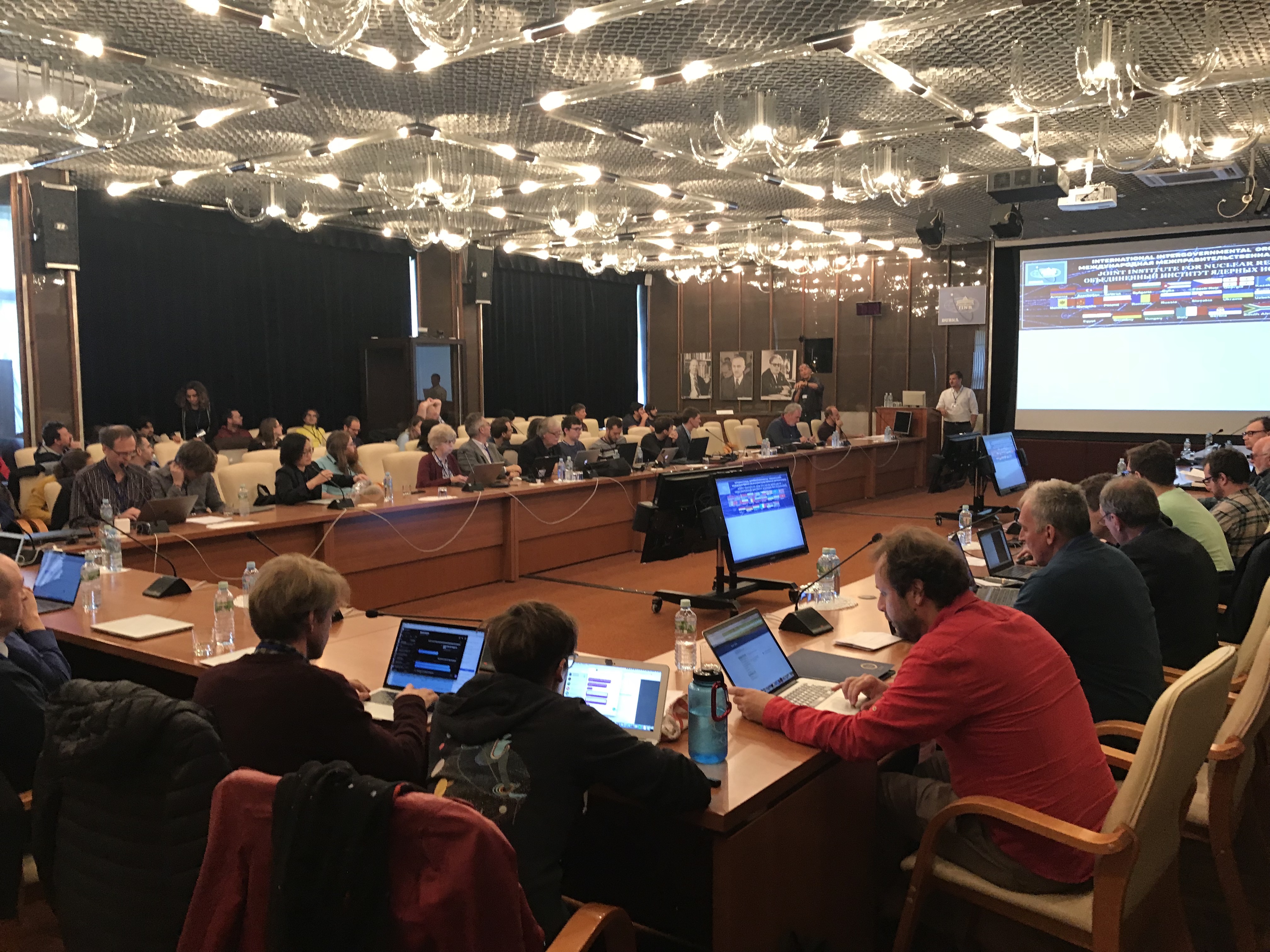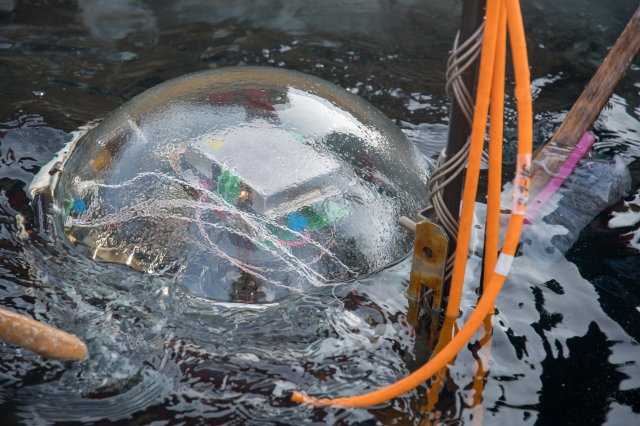News
25.10.2018
Reham El-Kholy (Cairo University, Egypt) speaks about a possibilityof studying production of antiprotons in the SPD detector at the NICAL collider for searching dark matter in astrophysical experiments.
24.10.2018
Professor Stepan Agaronovich Bunyatov, a talented scientist, outstanding organizer of science, doctor of science in physics and mathematics, passed away on 24 October 2018.
S.A. Bunyatov began working at the Laboratory of Nuclear Problems in February 1956.He defended the candidate of science dissertation in 1965and the doctoral dissertation in1977. In 1982, the title of professor was conferred on him.
His scientific interests lay in the fields of neutrino physics, charmed particle physics, interactions of π mesons and protons with nucleons and nuclei, πN→ππN reaction near the production threshold, and pion–pion interactions.
S.A. Bunyatov is a co-author of two discoveries, double π-meson charge exchange and production and decay of the nucleon-stable helium-8 nucleus, which were predicted by Ya.B. Zel’dovich.
23.10.2018
Dr. Bernhard Schwingenheuer speaks about the current status and perspectives of the LNGS experiments on the search for neutrinoless double beta decay.
18.10.2018
Yesterday, on 17 October 2018, winners of the Breakthrough Prize 2019 in Life Sciences, Fundamental Physics, and Mathematics were announced.The Breakthrough Prize 2019 in Fundamental Physics was awarded to Charles Kane and Eugene Mele from University of Pennsylvania “for new ideas about topology and symmetry in physics, leading to the prediction of a new class of materials that conduct electricity only on their surface.”
17.10.2018
A regular All-Russian Workshop on Physics and Computing in the ATLAS Experiment was held on 16–17 October 2018. Apart from JINR scientists, researchers from institutes and universities of Moscow, Protvino, Tomsk, and others participated in the workshop. Discussions embraced a wide range of investigations related both to the search for new physics and the Higgs boson and to the Standard Model and heavy quark physics. The participants spoke about achievements in solution of topical computing problems and in ATLAS upgrade activities.
16.10.2018
Discovery Channel Russia has shown an episode of the Technogenics series, part of which was shot in our laboratory at the beginning of this August.
.
12.10.2018
Today, the All-Russian Science Festival NAUKA0+ has opened in Moscow and will continue till 14 October. This 13th festival will be the largest of all previous ones. The festival is intended for a very wide audience and aimed at explaining in lay language what scientists do, how scientific research improves quality of life, and what prospects it opens up.
The main events will be held in the Fundamental Library and Shuvalov Building of Moscow State University and in the Expo Centre in Krasnaya Presnya. The JINR exposition in the Fundamental Library includes two mock-ups from our laboratory: the DLNP Medico-Technical Complex (JINR MTC) for proton therapy of tumours and the deep water neutrino telescope for the Baikal experiment.
11.10.2018
The COMPASS facility using the secondary beam of CERN’s SPS is a universal tool for testing basic principles of QCD in the low-energy region. For example, it allowed charged pion polarizabilities to be measured with the world’s highest accuracy in the radiative scattering of the beam pion with the momentum of 190 GeV/c in the Coulomb field of the target nucleus.
10.10.2018
Igor Boiko reviewed the current status of the experimental and theoretical determination of the anomalous muon magnetic moment and spoke about the possibility of further increasing its determination accuracy.
02.10.2018
The International Workshop on Very Large Volume Neutrino Telescopes (VLVnT-2018) will continue at the JINR International Conference Hall until 4 October 2018.
Current schedule of the workshop. Everyone who is interested in cosmic rays, neutrino oscillations, neutrino astronomy, and dark matter research and is invited. Topical problems of oceanology, limnology, and glaciology will be discussed at the workshop.
26.09.2018
On 1–4 October 2018, the International Workshop on Very Large Neutrino Telescopes VLVnT-2018 will be held at the JINR International Conference Hall. The preliminary programme is available on the conference site.
Everyone interested is invited!
26.09.2018
Renat Sadykov speaks about his general laboratory seminar on the theoretical support of experiments at high-energy colliders.



